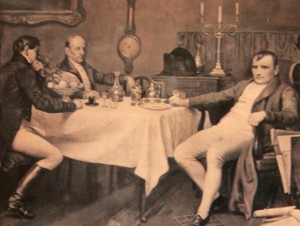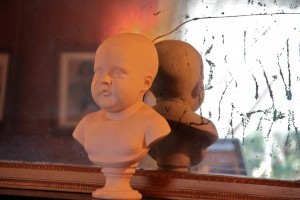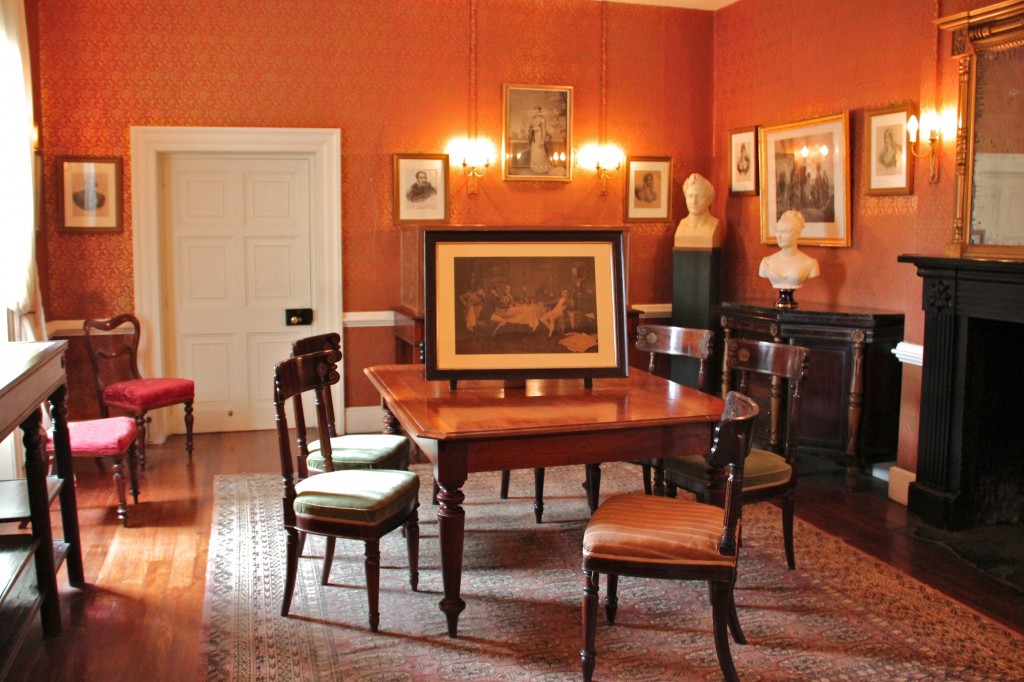At the far end of Longwood’s reception hall, the room in which Napoleon died, a door opens into the dining room.
 Here his companions-in-exile and his occasional guests gathered in the evening to eat a brief supper—for meals with Napoleon were only twenty-minute affairs. Afterward, they dissected battles or the emperor read aloud from Corneille, Rousseau, and even the Bible.
Here his companions-in-exile and his occasional guests gathered in the evening to eat a brief supper—for meals with Napoleon were only twenty-minute affairs. Afterward, they dissected battles or the emperor read aloud from Corneille, Rousseau, and even the Bible.
After his mother sent two priests to St Helena, the dining room was transformed into a chapel. At first, Napoleon attended Sunday mass inside the room; later, he watched from his adjoining study. He said it was proper for him at his death to return to the Catholic Church since he had been born within it. Years before, when questioned on his faith, he had replied that he “took on the religion of whatever country he was in, because that was the best policy.”
 Of all the rooms in Longwood House, this one is the least personal for me. Although the walls are covered in a facsimile of the former wallpaper, and the mirror with its horizontal crack is original, the many portraits and busts of Napoleon, his family, and his followers give it the air of a museum. I know Napoleon used to sit right there with his back to the fire, but I didn’t feel his presence within these four walls on any of my visits.
Of all the rooms in Longwood House, this one is the least personal for me. Although the walls are covered in a facsimile of the former wallpaper, and the mirror with its horizontal crack is original, the many portraits and busts of Napoleon, his family, and his followers give it the air of a museum. I know Napoleon used to sit right there with his back to the fire, but I didn’t feel his presence within these four walls on any of my visits.
Perhaps, like me, Napoleon didn’t care for this room. By 1819, he had taken to eating in his private chambers.


Pingback: Napoleon on St Helena: Reading Books - Finding Napoleon
Beautiful St Helena video. Beethoven is the perfect soundtrack. Pregnant with greatness.
Thank you, Laurent. My husband made it from the videos we took during our incredible voyage to St Helena. I still get goosebumps when I watch it!